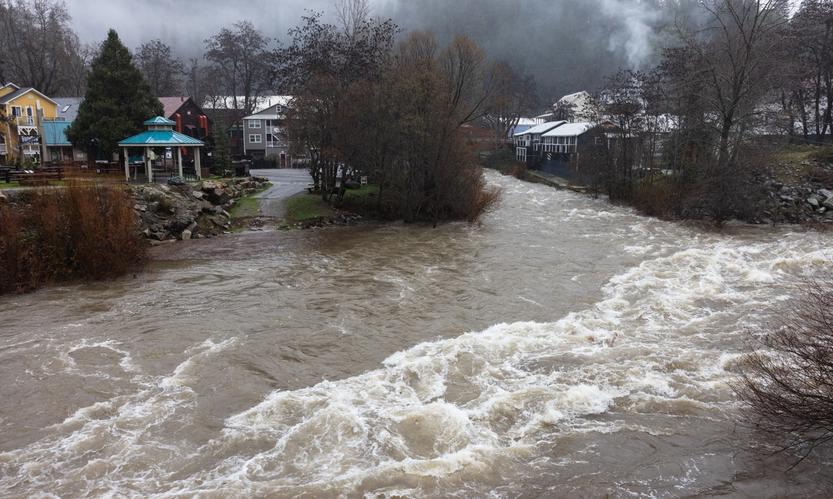Spring Encroaching: Tips for the 2023 Gardener
By Duncan A. Kennedy
January 12, 2023
There is a certain irony in writing about one of the most rewarding activities of summer during quite possibly the biggest winter storm we’ll see this season. Then again, however, it is never too early to start preparing for the growing season, and all the joys and challenges alike it can bring. This is why I am already preparing to build my gardens for 2023, despite the freezing rain and bitter cold enshrouding us right now, and why I’m sharing the most useful tips on earning your green thumb I’ve gleaned from 15-plus years of solo or assisted gardening in the Lost Sierra. One of the most crucial steps, long before you even break ground or plant your first sprouts, is to do your research on what you’re going to plant, where you’re going to site your garden, and how you’re going to get water and nutrients there. Frequently, these questions will inform each other – let’s say you are, for instance, trying to do as I stubbornly did and grow corn in Calpine. The most optimal site proved to be an old pigpen on a south-facing rise near the edge of a clearing, which provided sunlight and plenty of soil nutrients from the get-go and made water access via irrigation fairly easy. It took three seasons of trial and error before I was able to get a successful corn crop, and much of that could have been avoided if I’d taken better care with my research to begin with. So go out, walk your land, and figure out what areas have the right slope and right microclimates to grow your planned crop, and write all this down to figure out what steps to take. Soil and climate are arguably the two most important variables to account for when gardening, and luckily for us we can find both types of information via a single tool – the Natural Resources Conservation Service’s Web Soil Survey tool. This interactive mapping tool allows you to define the area you are in on high-resolution satellite imagery and learn your land’s soil composition, average number of frost-free days, elevation, temperature and rainfall data, and even soil drainage factors. From there, you can get a very good idea of what base conditions you’re dealing with and how you might have to irrigate, amend the soils and plan for frost protection. Regarding composting, which is one of the most valuable tools in a gardener’s arsenal for providing that extra little bit of nutrition for your plants to thrive, my advice is to keep it simple and not go crazy. Some people drive all over the place gathering the right kind of organic matter to make elaborate “compost teas” of dubious efficacy, but the best strategy really is to get some sawdust, mix it with horse or chicken manure in a big heap and call that good enough to mix and water weekly until you’ve gotten a good-quality soil amendment out the other end. You can add lawn clippings or similar green garden waste to improve the end product as well – just make sure not to get any contaminants in there and you’ll be golden. In a climate as dry as ours, making sure water use is efficient is critical in any setting, and gardening is no different. Traditional pivot or impact sprinkler systems may be the standard in both commercial and hobby settings, but if you can set up a drip irrigation system – especially one on an automatic timer that lets you do most watering in the late evening or early morning – it will be well worth your while, given how much less water you’ll lose this way to the desiccating winds of the Sierra Nevada and Great Basin. Supplies to build a system like this can be ordered from online catalogs like Rainbird or Dripworks, or found at regional outlets like Peaceful Valley Farm Supply in Grass Valley and Western Nevada Supply in Reno, Truckee and Susanville. What kind of seeds you start or saplings you buy and when you plant them will also depend on the weather and what you’re trying to do. For seeds, if you’re trying to be experimental and save seed for next year, Baker Creek and Territorial Seeds are two of the best suppliers; in contrast, if you’re looking for fast-growing hybrids with a better chance of production. Gurney’s is a reliable supplier. Regarding bare-root trees and vines, Raintree Nursery has one of the best selections in the Western U.S. and will be a good resource for most things the USDA allows shipped to California. With all these resources in hand and perhaps a quick email to our good friends at the UCANR office in Quincy for some more detailed advice, this short article should set you well on your way to setting up an excellent garden once the storms cease and this area warms up and dries out. Until that time comes, I will be indulging in some other agricultural experiment of seemingly mad naivete – perhaps this year I’ll trial oilseed sunflowers or see if I can get a vineyard to survive in Sierra Valley. Who knows – perhaps one of you will have your own tips to share next year?
Featured Articles

Storms Bring Heavy Rainfall and Local Disruptions →
December 22, 2025
Sierra County faces power outages and water issues amid heavy rainfall and storm warnings.
215 Animals Seized for Cruelty from Grass Valley Property →
December 22, 2025
Human Remains Found Near South Yuba Bridge in March Identified →
December 17, 2025
Transfer Station Burn Suspended After Community Concerns →
December 16, 2025
Sierra Hardware Plans Extensive Repairs After Flood Damage →
December 8, 2025